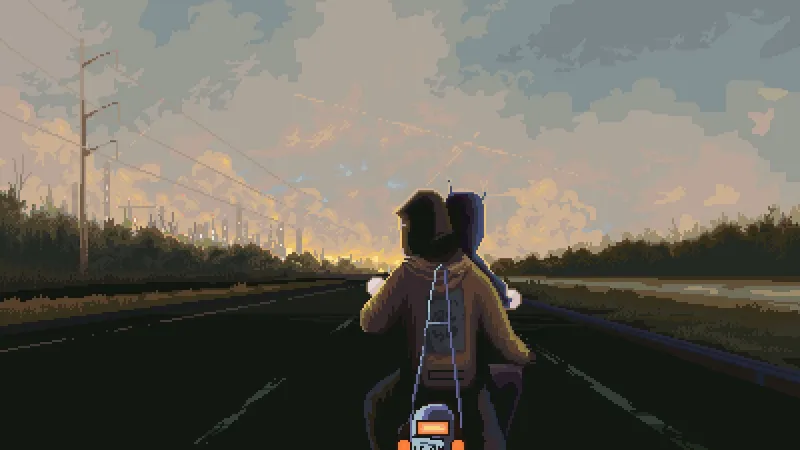Point-and-click games cemented the huge potential of turn-of-the-century interactive narrative, using innovative environment/dialogue puzzles with impressive pixel art and chiptune music. These days we lose ourselves in impossibly large sandboxes with equally extensive, decision-driven storylines. It’s fitting, then, that Norco feels like a prized relic from the Sierra-led golden age of digital adventure. Geography of Robots’ debut title muses on unfettered capitalism and classism in the heart of America’s often-neglected Deep South. Additionally, Norco’s retro-futuristic and net-art aesthetic is backed up by some of the best surrealist stories I’ve seen since Kentucky Route Zero.
Norco envisions the bayou as a series of interconnected nodes on a map. I hopped around numerous venues, analyzed historical manuscripts in seedy shops, bought dog food from the supermarket, pulled hallucinogens from dirty toilet stalls, and talked to the townspeople. Each vignette pops with psychedelic hues—rivers sparkle beneath the tree line, half-light casts long shadows across grassy hills, watercolor clouds form over the empty highway. Norco’s writing might indicate that the city is warped and diseased, but it’s still beautiful to look at.
The protagonist Kay returns just as her titular community in Louisiana is on the brink of extinction. Kay’s younger brother, Blake, is nowhere to be found, and her estranged mother, Catherine, recently succumbed to cancer. In the months leading up to her death, Catherine was researching a floating anomaly in a nearby lake, which aroused the suspicions of the evil oil conglomerate Shield. As Kay, I’ve wandered a strange, modernized Norco in hopes of finding Blake and completing Catherine’s life’s work. Norco is teeming with delightful twists and chilling realizations that confronted me, along with many other eccentrics, wrecked detectives and grotesque machines. There is plenty of dialogue and world building, but the dreamlike and philosophical quality of the prose makes each block of text a delight to read.
On the rare occasions when I had trouble keeping up with the lines, I accessed Kay’s “MindMap,” an intelligent subversion of the traditional quest log that links key objects, NPCs, and locations. Here I could recall key events and relationships for additional detail, to advance the plot, or to recall secondary objectives. Norco mainly advertises puzzle-based gameplay, but don’t be fooled; The loop is brimming with its fair share of nuances. At one point, a multi-part assignment required me to hover over backgrounds with a phone camera to reveal unseen solutions, adding an extra level of depth and wonder to revisited areas. There are even side puzzles that I could have missed if I hadn’t meticulously explored the environments with my cursor, masterfully paralleling the enigmatic and illusory nature of the story.
My only gripe with Norco is the pinned combat system. From time to time, Kay and her ever-growing group of party members – e.g. a stuffed monkey, a fugitive security droid, etc. – cross paths with attackers. Attacks are mini-games ranging from replicating screen patterns to clicking on enemy weak spots at timed intervals. I quickly grew tired of these superfluous encounters. In a game full of unique design options, combat pales in comparison, and I’m relieved there’s only a handful of these sequences.
I’ve never played a game like Norco, which elegantly celebrates and exhorts its cultural roots while chronicling a strange doomsday scenario. Kay and Catherine’s shattered America is not so dissimilar to our own—burgeoning industrial complexes threaten to crowd out low-income families, automated systems crowd out human workers, and filthy 24/7 work stymies advancement. The game isn’t always dark. One cool evening I sat on the town hall and looked at the constellations with a stranger. Hours earlier, I was flipping through precious memories on a broken flat-screen TV. Norco is an unforgettable reminder that behind madness there is beauty.








